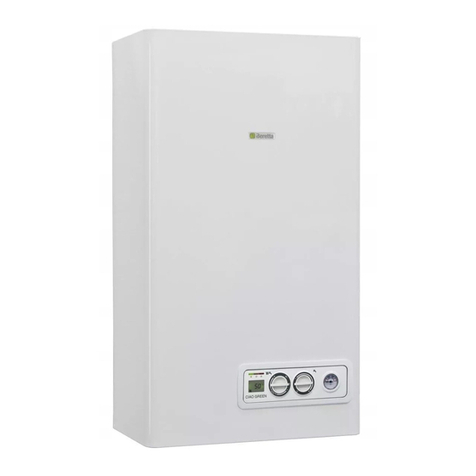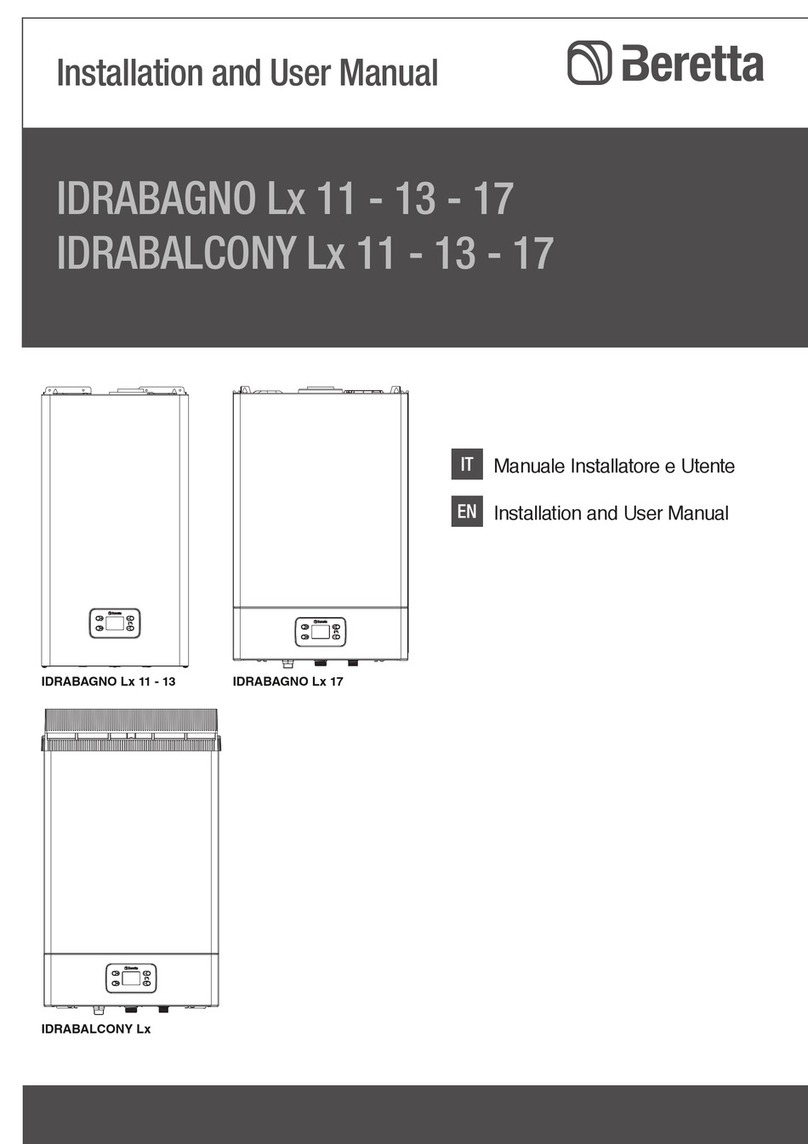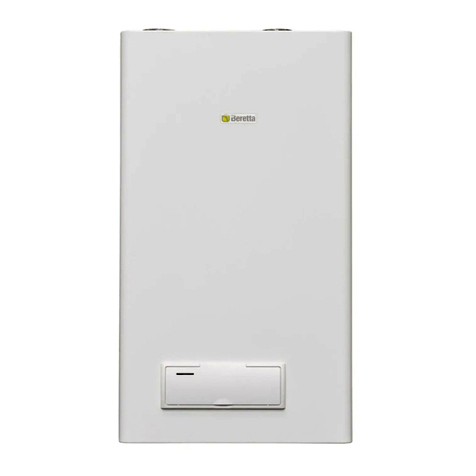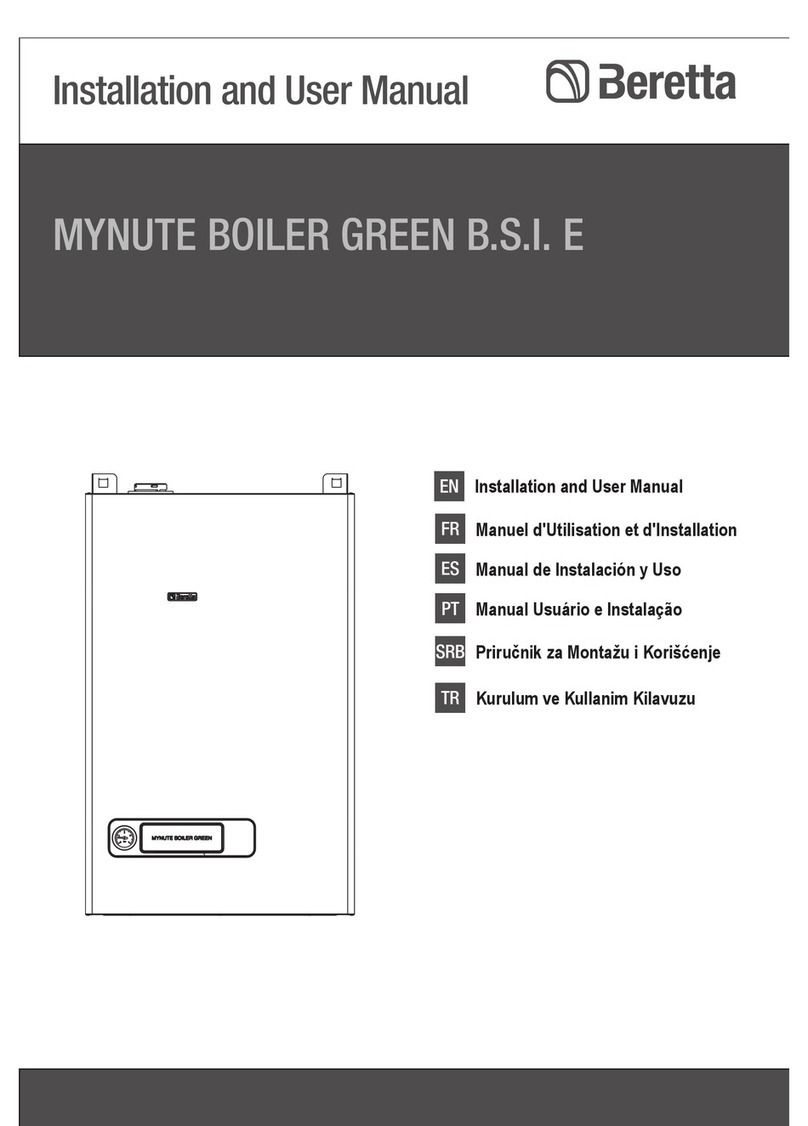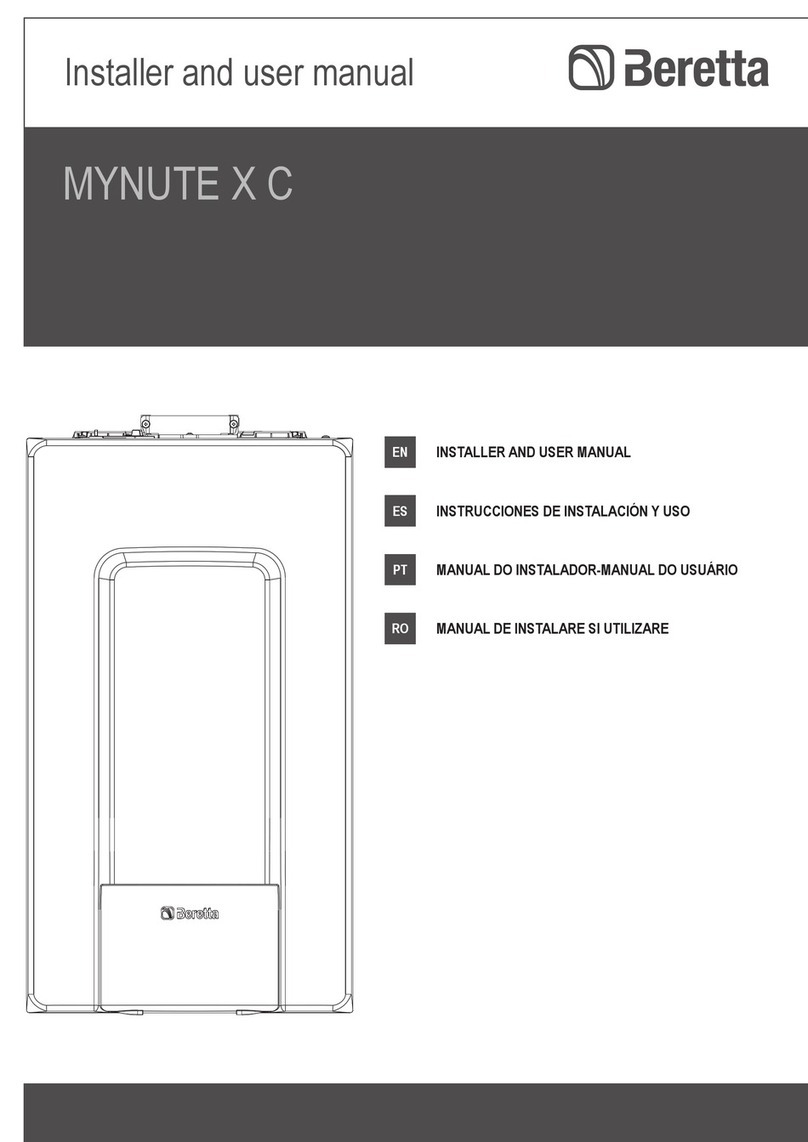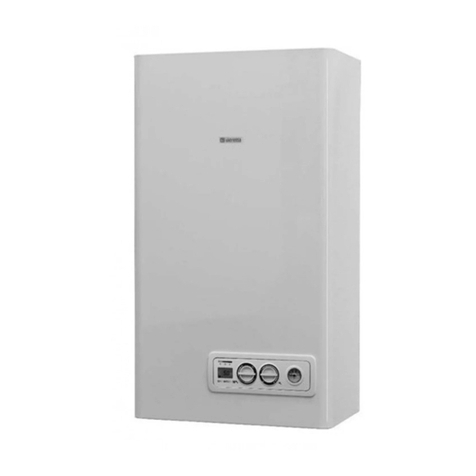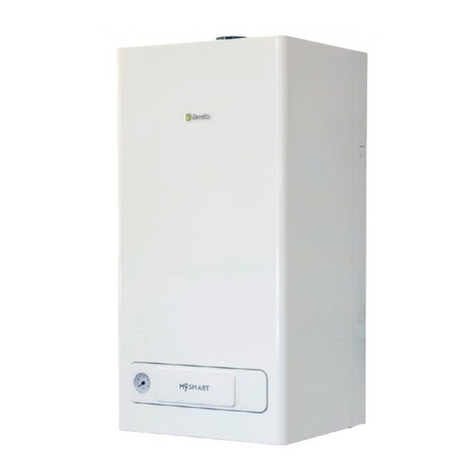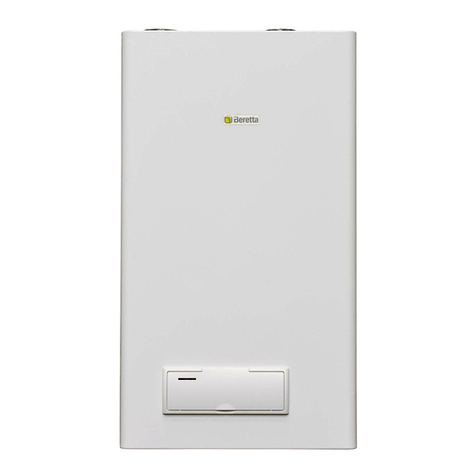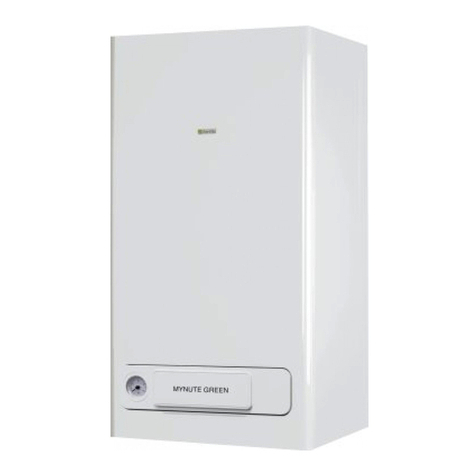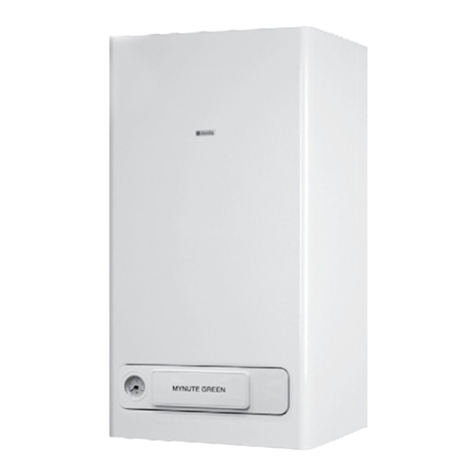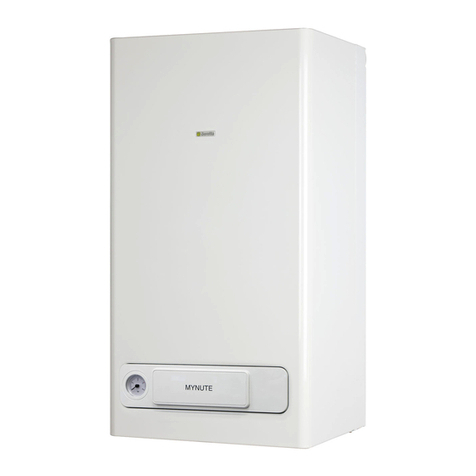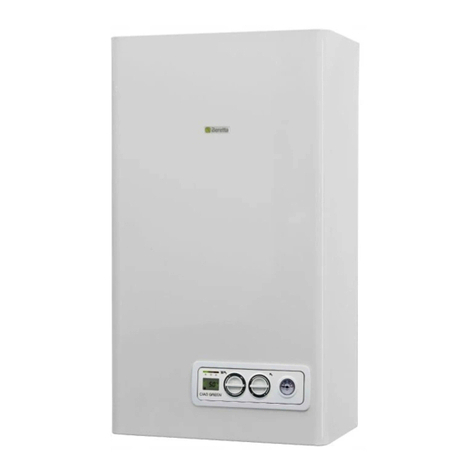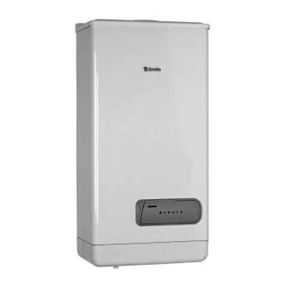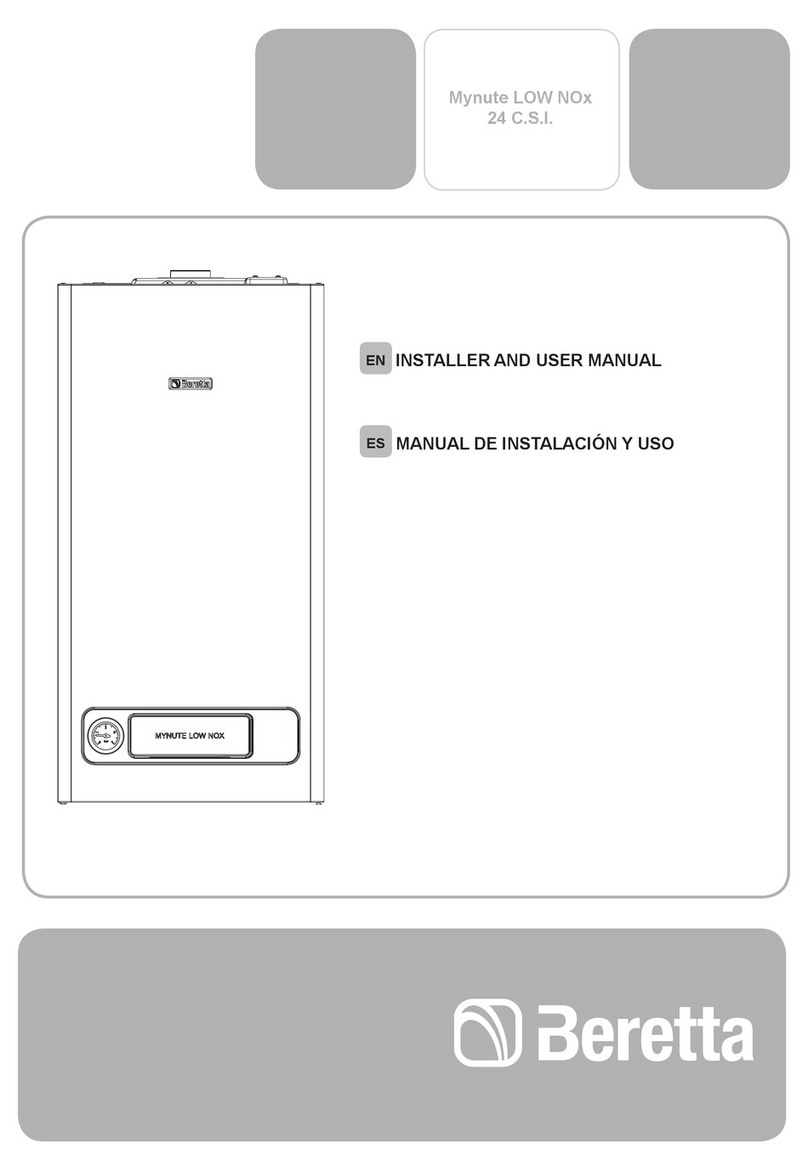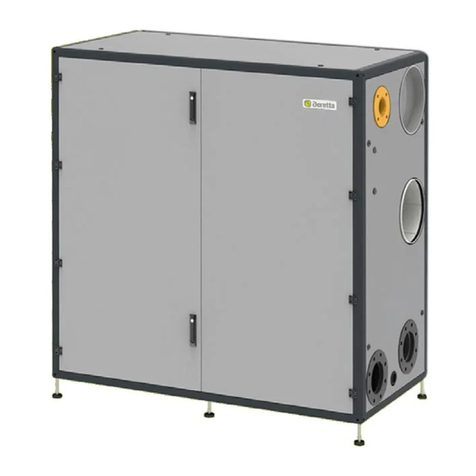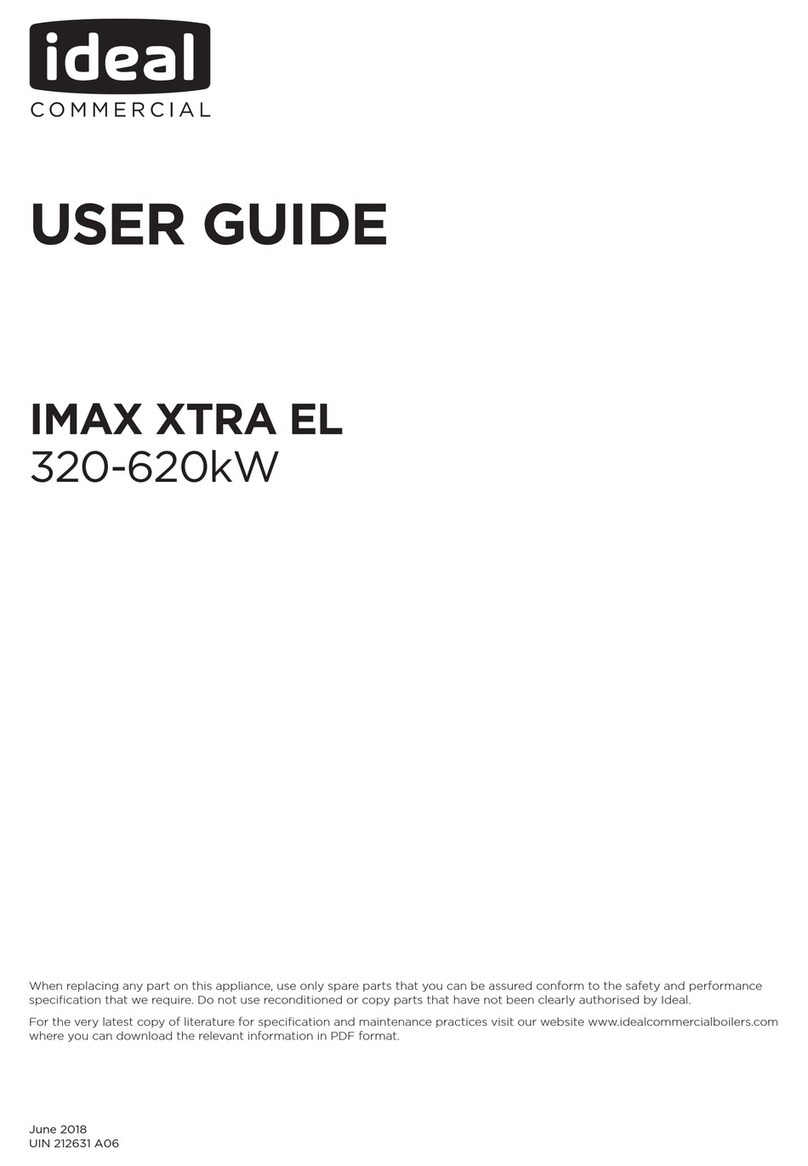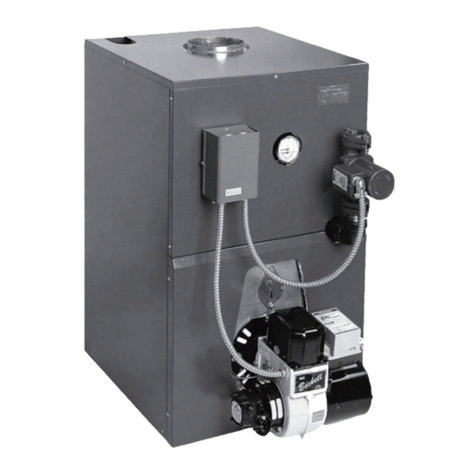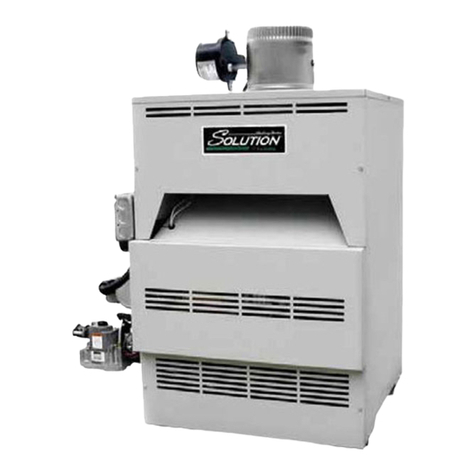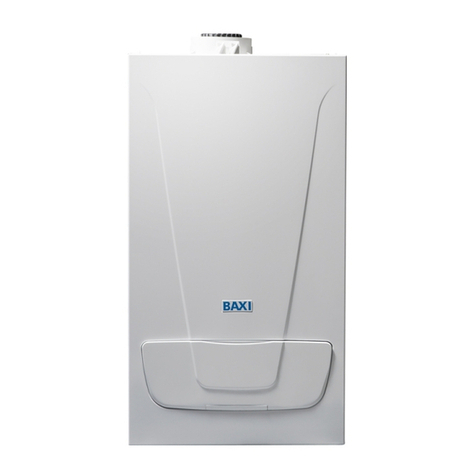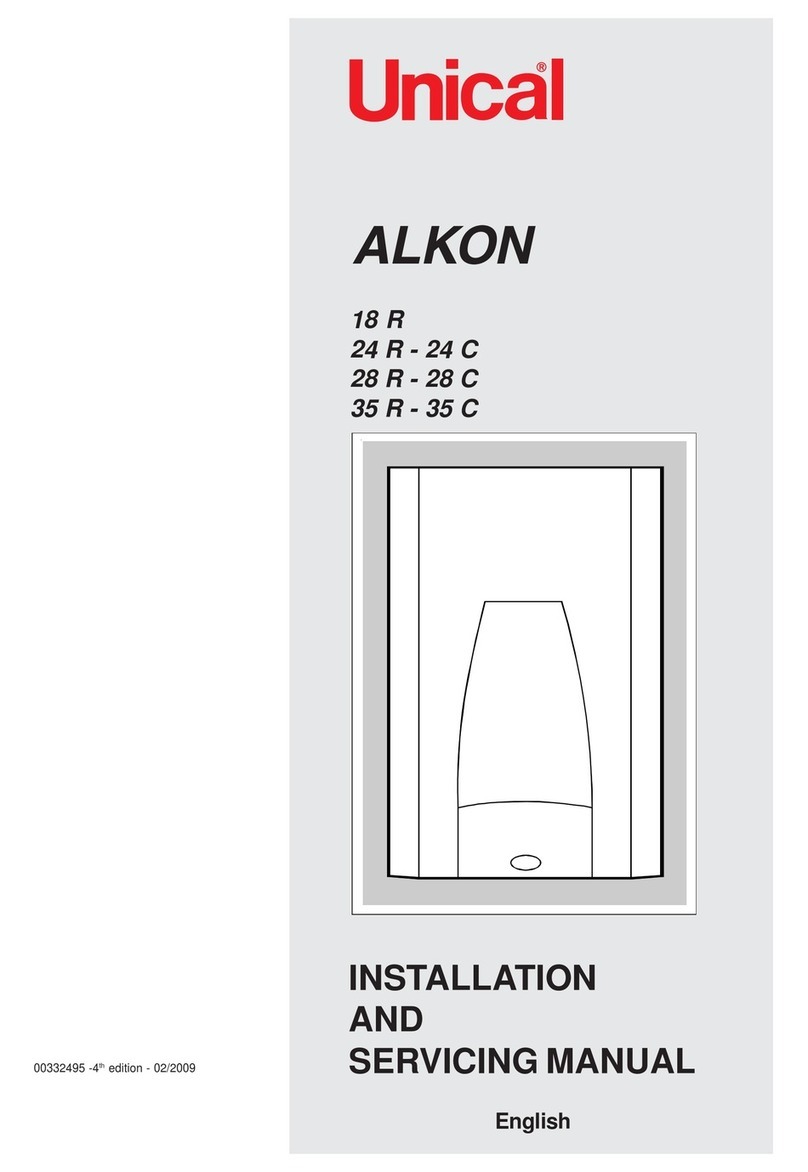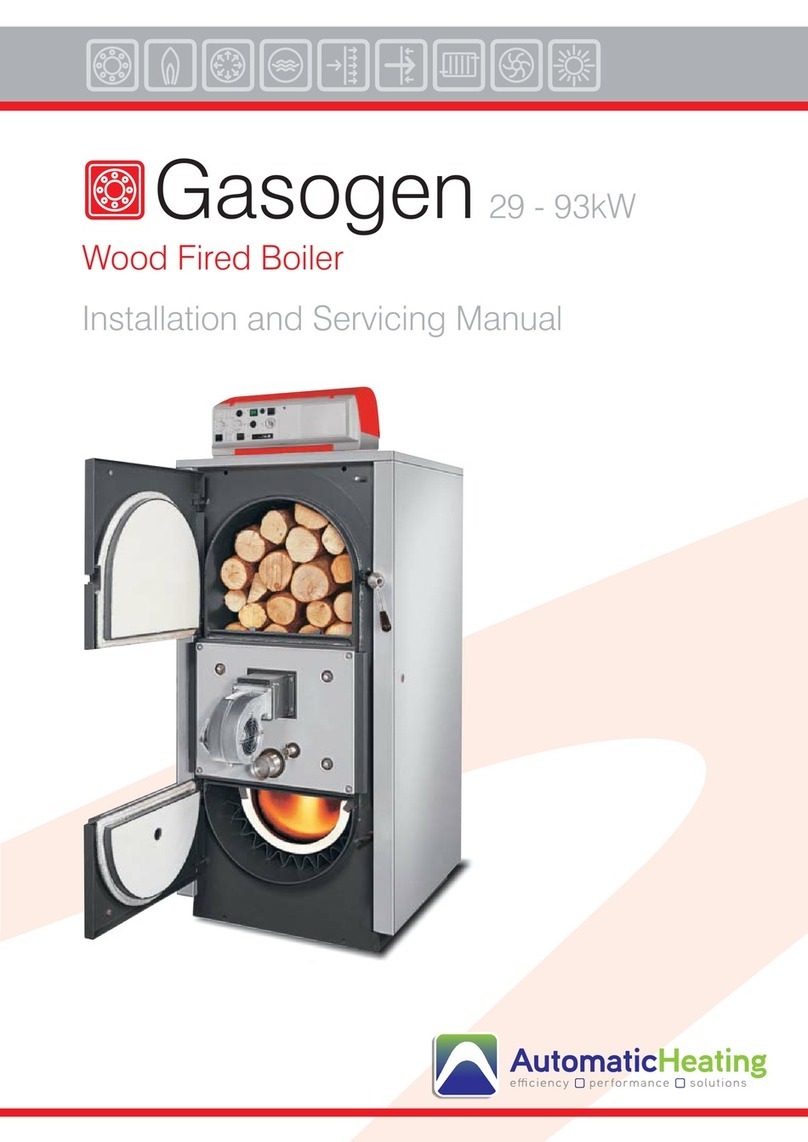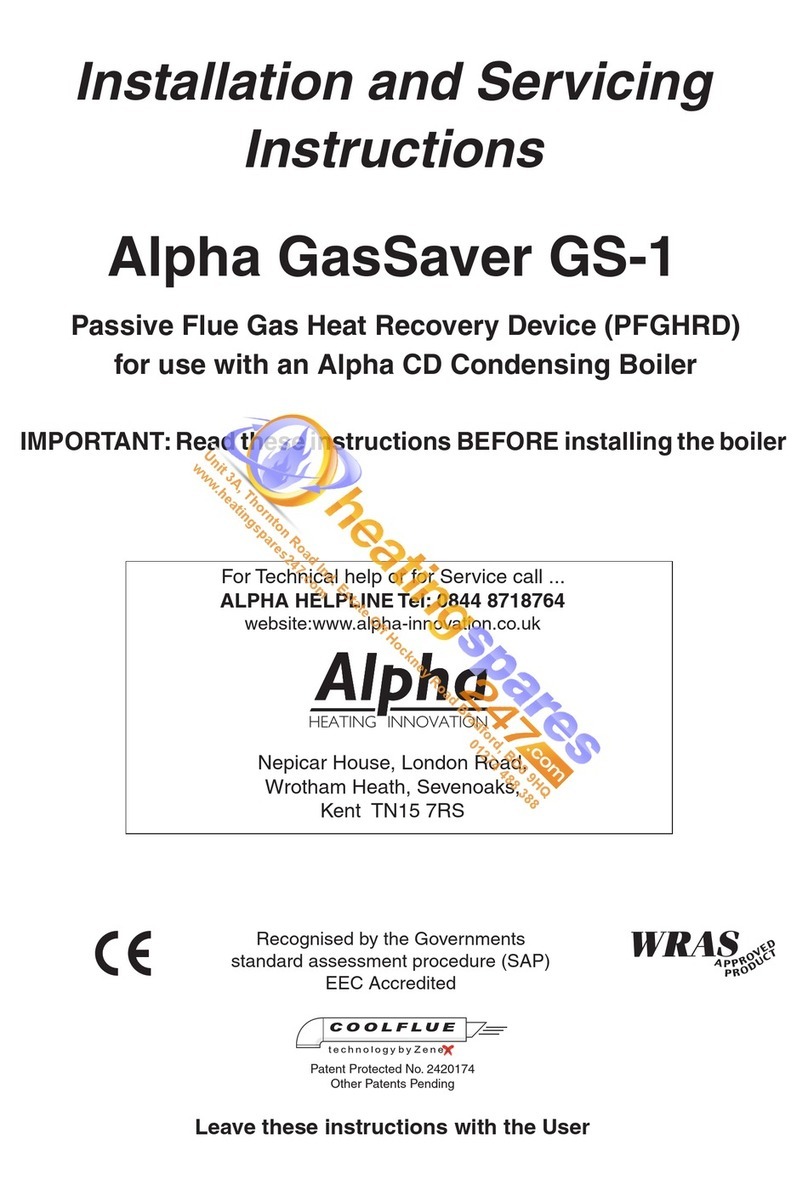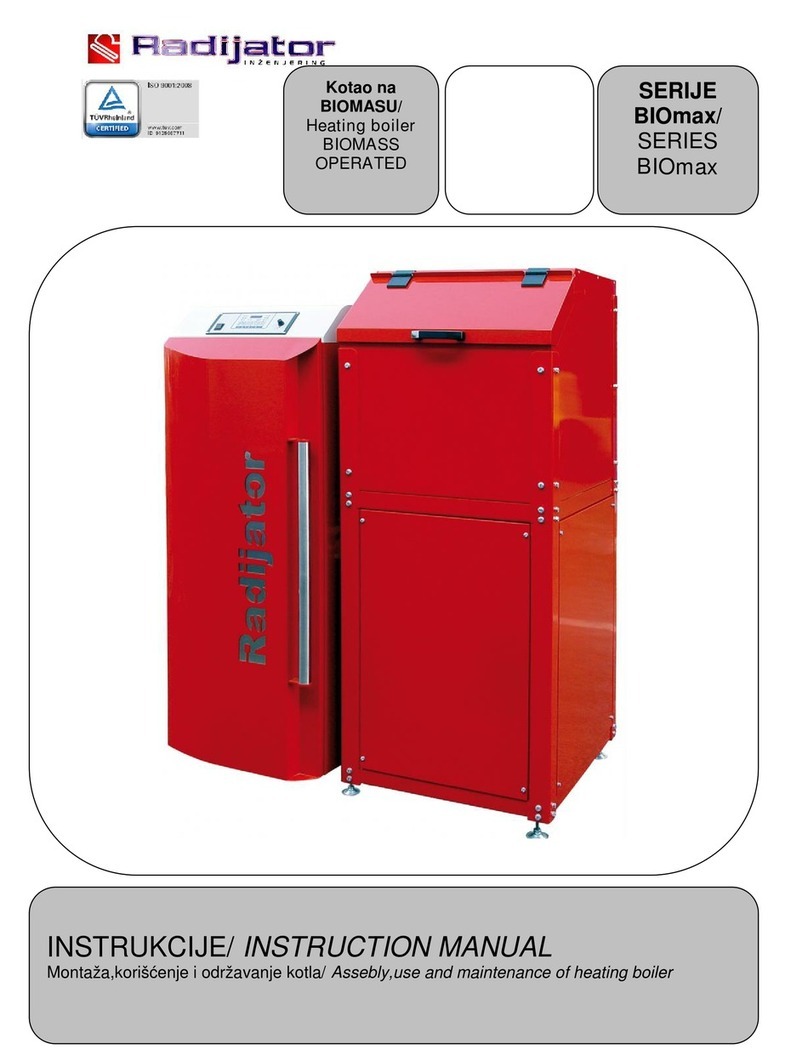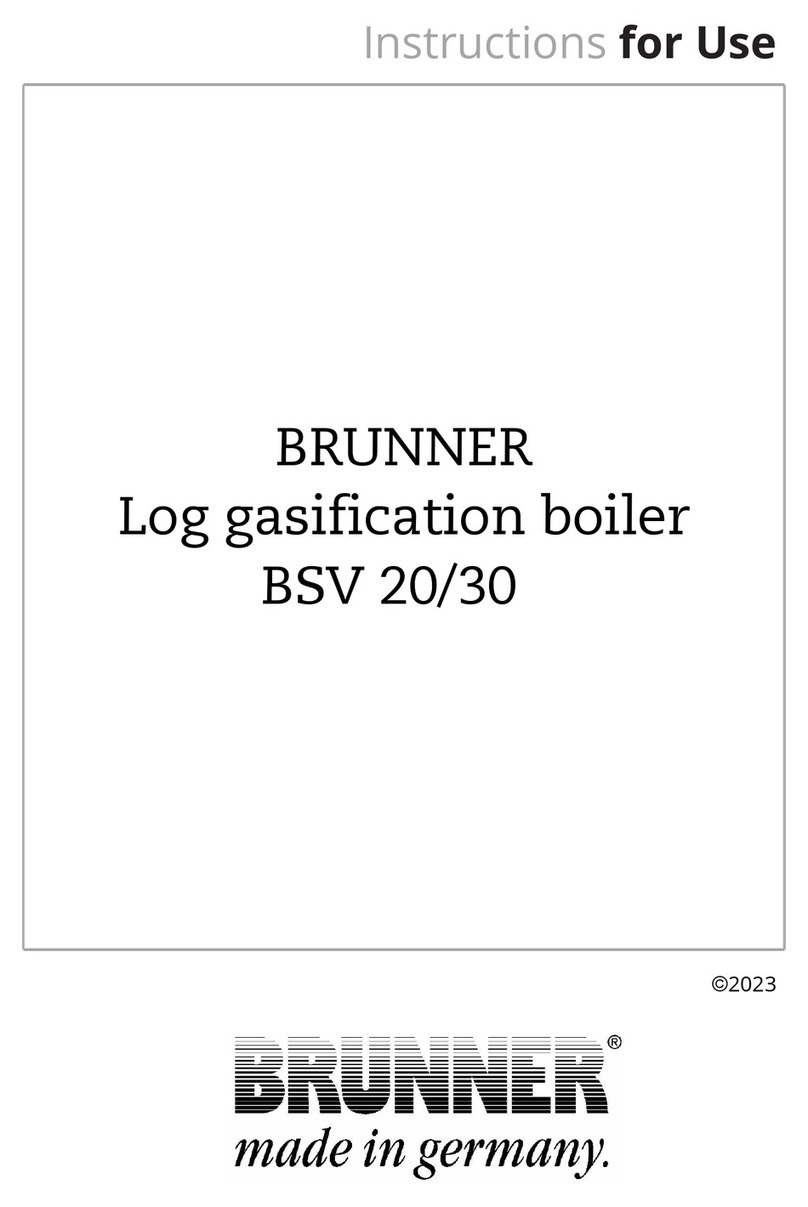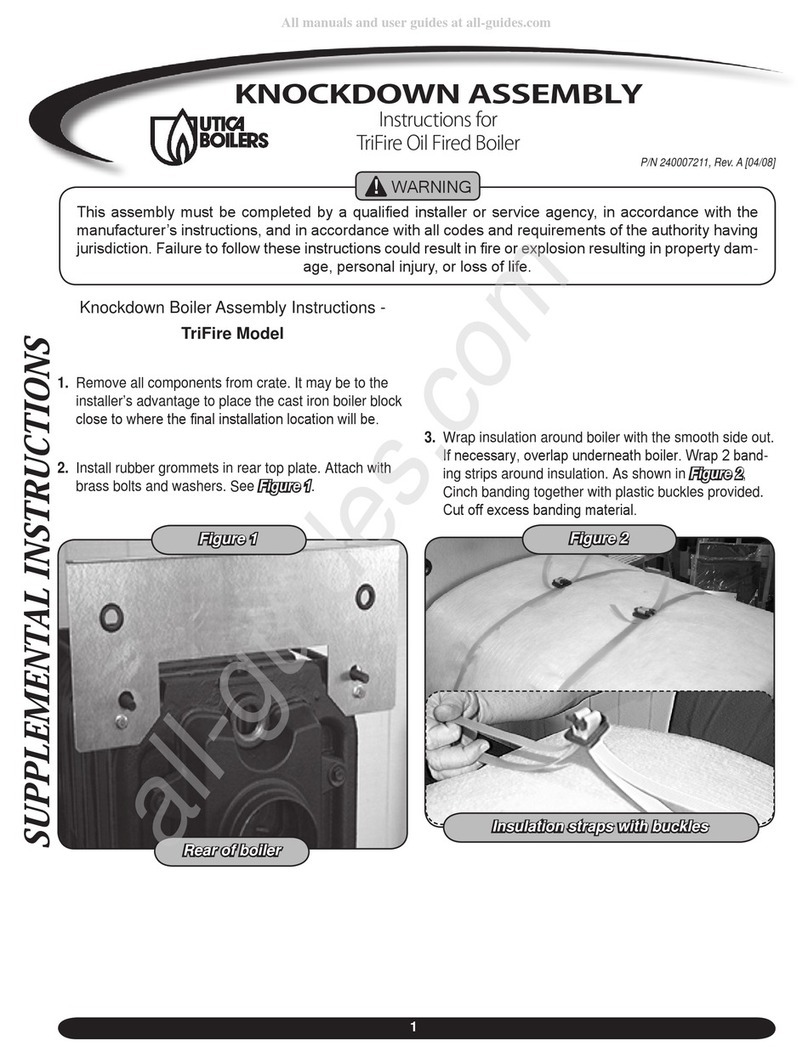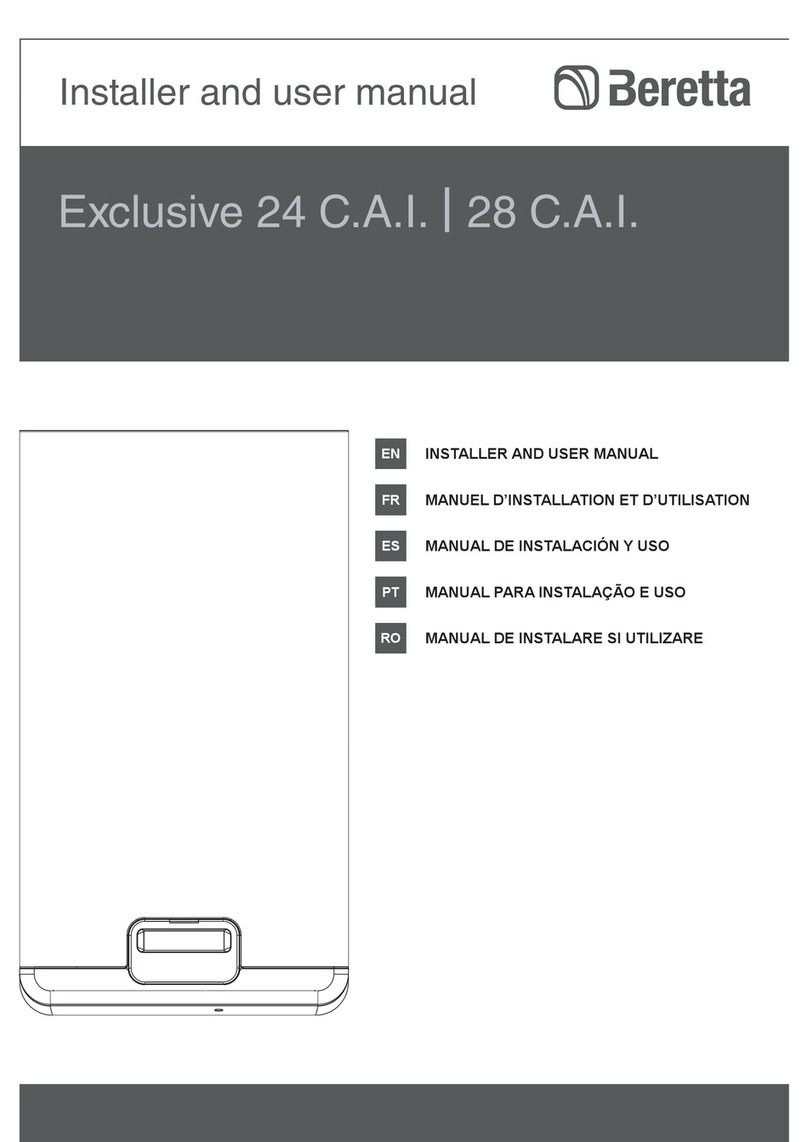Connect the boiler to an safe earth circuit according to current leg-
islation.
The installer is responsible for ensuring the appliance is suit-
ably earthed; the manufacturer declines all liability for any
damage deriving from incorrect or omitted earthing.
Live and neutral (L-N) connections should also be respected.
The earth conductor must be a couple of cm longer than the
others.
The boiler can operate with phase-neutral or phase-phase power
supply. For oating power supply, without an earth-bonded conduc-
tor, it is necessary to use an insulation transformer with secondary
anchored to ground.
Gas and/or water pipes may not be used to earth electrical
equipment. Use the supplied power cable to connect the boiler
to the mains power supply. Connect the ambient thermostat and/
or external programmable timer clock as shown in the electrical
diagram.
When replacing the power cable, use a HAR H05V2V2-F cable,
3x 0,75 mm2, max. external Ø 7 mm.
3.8 Filling the heating system (g. 14)
Once the hydraulic connections have been carried out, ll the heat-
ing system.
This operation must be carried out with cold system, according to
the following instructions:
DHW system
- open the cold water inlet tap to fill up the water tank
- open the hot water to check the water tank filled up and wait until
the water discharge
Heating system
- making sure that the drain valve (B) is closed
- giving two or three turns to the cap of the automatic air vent valve
(C) to open it
- opening the filling tap (I) until the pressure measured by the
hydrometer is about 1,5 bar
- open the manual vent valve (E) and close it again once the sy-
stem has been vented; if necessary, repeat this operation until no
more air leaves the valve (E)
- close the filling tap (I)
- each time the electricity supply to the boiler is switched on, an
automatic purge cycle lasting around 2 minutes starts.
During this phase the symbol is shown on the monitor.
To interrupt the automatic purge cycle proceed as follows: access
the electronic board by removing the shell, turning the instrument
panel towards you and unscrew the two screws of the small cover
on the electronic board to have access to the terminals.
NOTE: air extraction from the boiler takes place automatically,
through two automatic bleeding valves C.
NOTE: the boiler is also equipped with a semi-automatic filling sy-
stem. The first system-filling operation must be carried out by ope-
ning filling tap (I) with the boiler turned offsequence.
3.9 Draining the heating system
Before starting to empty it, remove the electrical feeder by positio-
ning
the general switch for the system on “off”.
- Close the interception devices for the thermal system
- Open the automatic air vent valve (C)
- Unscrew the drain valve (B) by hand, keeping the elbow on the
hose in position to prevent it coming out of its seating
- The water from the system is discharged through the outlet col-
lector (A)
- Emptying out the lowest parts of the system
3.10 Draining the domestic hot water system
The hot water system must be emptied every time there is risk of
freezing by:
- turning off the stopcock at the mains
- unscrew the cap on the hose adapter (G)
- connect a plastic hose to the hose adapter of the storage boiler
drain valve (G)
- open the valve drain device
- turning on all the hot and cold taps
- emptying out the lowest parts of the system.
ATTENTION
The collector must be connected, by means of a rubber pipe, to a
suitable collection and evacuation system in the storm water outlet
and in compliance with current regulations. The external diameter
of the collector is 20 mm: we therefore suggest using an Ø18-19
mm pipe, to be closed with a suitable clamp (not supplied). The
manufacturer is not responsible for any damage caused by the lack
of a collection system.
3.11 Suggestions for correctly venting the air from the
heating circuit and the boiler
When installing the boiler or when carrying out extraordinary main-
tenance operations, proceed as follows:
1. Use a CH11 wrench to open the manual breather valve located
over the air distribution box (g. 6): connect the hose supplied
with the boiler to the valve in order to discharge the water into
an external container.
2. Open the manual lling tap on the hydraulic assembly and wait
until water starts owing from the valve.
3. Power the boiler leaving the gas tap closed.
4. Use the room thermostat or the remote control panel to activate
request for heat so that the three-way will turn to heating.
5. Turn on a tap to activate request for hot water (for instanta-
neous boilers only; use the water heater thermostat for boilers
just for heating connected to an external water heater) for an
interval of 30” every minute to make the three-way cycle from
heating to hot water and vice versa about ten times (the boiler
will be go into alarm as there is no gas under these circum-
stances, it must therefore be reset every time this happens).
6. Continue the sequence until water only comes out of the man-
ual air vent valve and the ow of air has nished; close the
manual air vent valve at this point.
7. Make sure the system is at the correct pressure (1 bar is ideal).
8. Close the manual lling tap on the hydraulic assembly.
9. Open the gas tap and switch on the boiler.
3.12 Fumes exhaustion and air suction
For fumes exhaustion, refer to the current local and national regu-
lations. Always comply with local standards of the Fire Department,
the Gas Company and with possible municipal dispositions.
The release of combustion products is assured by a centrifugal fan
placed inside the combustion chamber and its correct operation
is constantly checked by a pressure switch. The boiler is supplied
without the ue gas outlet/air suction kit, since it is possible to use
the accessories for appliance with a forced draught sealed cham-
ber that better adapts to the installation characteristics.
It is essential for ue gas release and the restoration of boiler
combustion air to use certied pipes and that connection is car-
ried out correctly as indicated by the instructions supplied with the
ue gas accessories. With only one smoke pipe you can connect
more pieces of appliance provided that every piece of appliance is
sealed chamber type.
POSSIBLE OUTLET CONFIGURATIONS (FIG. 10)
B23P/B53P Suction indoors and discharge outdoors
C13-C13x Discharge via concentric wall outlet. The pipes may
leave the boiler independently, but the outlets must be concentric
or sufciently close
together to be subjected to similar wind conditions (within 50 cm)
C23 Discharge via concentric outlet in common smoke pipe (suc-
tion and discharge in the same pipe)
C33-C33x Discharge via concentric roof outlet. Outlets as for C13
C43-C43x Discharge and suction in common separate smoke
pipes, but subjected to similar wind conditions
C53-C53x Separate discharge and suction lines on wall or roof and in ar-
eas with different pressures. The discharge and suction lines must never
be positioned on opposite walls
C63-C63x Discharge and suction lines using pipes marketed and
certied separately (1856/1)
C83-C83x Discharge via single or common smoke pipe and wall
suction line
C93-C93x Discharge on roof (similar to C33) and air suction from a
single existing smoke pipe
“FORCED OPEN” INSTALLATION (TYPE B23P/B53P)
Fumes outlet duct Ø 80 mm (g. 11a)
The fumes outlet duct can be aimed in the most suitable direction
for installation needs.

